Posted on October 30, 2015
Memoirs
My Mother-in-Law recently attended a memoir writing workshop and it reminded me of the importance of documenting one’s life. I look forward to reading her memoir. The pursuit of genealogy is so much more than documenting names & dates. It is greatly enriched with personal stories that give us a glimpse of the person’s life, their struggles and joys and the historical time period in which they lived.
I recently came across my grandmother’s (Glenna Sunderman Carley) brief memoir of childhood, written in 1981. I wish she had written much more. She begins the memoir as follows:
She begins the memoir as follows:
“This will be a story about my parents and grandparents. Perhaps it will not be of great interest to you now, but in future years you, or your children, may want to know something about them, and there will be no one to ask. In the genealogy records there are dates and places, but not many intimate facts. I wish my Mother and Father had told us more of their families.”
As the family genealogist, my grandmother must have understood the importance of documenting the family stories, yet perhaps she did not believe that her own life was interesting enough to warrant documenting beyond a mere 5 pages.
My grandmother goes on to write:
“I really have no vivid recollections of my early childhood, except that we were a happy family. Dad (William Arthur Sunderman) worked 6 days a week at Meekins, Packard & Wheat department store in the drapery and rug department and Sunday was his only free day. So he generally attended only the Sunday evening church service. Sunday afternoons we generally went for long walks, had picnics and knew every inch of Forest Park – the zoo, the rose garden and we knew just where the biggest violets and lady slippers were to be found and when they were in bloom.”
My grandmother lost her own mother (Alice May Lowden Sunderman) when she was 10 and writes:
“My mother was a slight person, very sensitive in nature; her top weight was probably 100 pounds. In 1914 Mother had a nervous breakdown and spent the summer at a farm on a hill overlooking Huntington, Mass.”
She writes of her Grandfather (Orin Lowden):
“He was an easy going man, a gardener by trade and was known for his skill in raising flowers, especially sweet peas. He liked to play the harmonica and his favorite piece was “Sweet Hour of Prayer”, and he annoyed my grandmother a great deal with his playing.”
She writes of her Grandmother (Kate Raab Sunderman):
“Grandma was a mild mannered person, long suffering and very understanding. She did not have an easy life by any means, but all their children (8) were very responsible and made something of their lives. Her cooking was great; there was always plenty of food and such a variety. She always made lemon pie for me knowing it was my favorite – and I can still taste it. She and I used to go to the Farmer’s Market early in the morning to buy any foods not in their garden. And on days when she was not too busy we would go to the Palace Theatre for a movie and vaudeville show.”
She concludes with:
“Our pleasures were simple ones – we had all the necessities of life – not many luxuries. But we were satisfied and happy. We had lots of friends and made our own recreation. There were no playgrounds, no one to entertain us. We enjoyed life as we found it.”
I wish that my grandmother had written more about her life. These few pages are a glimpse into the early events that made my grandmother who she became; a devout Christian, an accomplished cook, a tender of a beautiful flower garden, a gentle soul and mostly a loving grandmother.
Despite my frequent urgings, my mother and father never wrote their memoirs; they always thought there would be more time. I will be taking my own advice to begin documenting my story for future generations.
Posted on August 8, 2015
Weddings
I’ve been thinking a lot about weddings, as mine is just a few weeks away, so I thought I would document some other Seattle family weddings. All have ties to St. Mark’s Cathedral where Bob and I will be married.
My Great Grandparents (George Meade Emory & Josephine Sloan DeWolfe) were married in Seattle in 1895. As the newspaper article indicates, although they were married at the bride’s home, the officiant was from St. Mark’s.
“The consumation of good taste was shown in the quiet, but refined, tone which characterized the arrangements for the marriage of Mr. George Meade Emory and Miss Josephine DeWolfe. The marriage took place at the home of the bride’s parents, Mr. and Mrs. Frederick S. DeWolfe, on the southwest corner of Depot and Third Streets, on Wednesday evening at 9 o’clock. Only a few friends and relatives were present, among the latter being Judge S. DeWolfe and Miss DeWolfe, of Montana. The ceremony was performed by Rev. David Claiborne Garrett, rector of St. Mark’s parish, in accordance with the impressive ritual of the Protestant Episcopal church. Mr. and Mrs. Emory went for a quiet wedding journey to Victoria and thence to Banff, whence they return this week. They will be at home to their friends within a few days at 214 Banner Street, their new home.”
My Grandparents (Frederick DeWolfe Emory & Marion Frances Burton) were married in Seattle in December, 1926. They were married at Trinity Episcopal Church, which is the “mother” church to St.Mark’s.
My parents (George Meade Emory and Deborah Ann Carley) were married at in the Thomsen Chapel of St. Mark’s Cathedral in 1959.
My sister was married at St. Mark’s in 1997, and someday my nieces may carry on the tradition.
My wedding will also be in Thomsen Chapel of St. Mark’s Cathedral, and will be the 4th generation in the family to be married in Seattle. Unlike generations past, neither the event (nor my dress) will be mentioned in the local newspaper. Like these other weddings, it will be a day spent with family and friends, and blessed with love and joy.
Posted on July 23, 2015
Campbell D. Emory & Camp Chehalis
I have always thought that my earliest ancestor in Washington State was George Meade Emory, who arrived in Seattle in 1889. However, I recently found out about an ancestor (George Meade’s father) who was in the Pacific Northwest (albeit for a short time) much earlier.
Campbell Dallas Emory was my gg grandfather. He was born in Philadelphia in 1839. In May of 1861, at the age of 22, he graduated from the U.S. Military Academy at West Point. The photo below was most likely taken close to his graduation from West Point.
The Civil War had just begun in April of 1861, and Emory was immediately promoted to Second Lieutenant, 6th Infantry and became part of the “Rebellion of the Seceding States”. As early as July of 1861 he served on frontier duty at Ft. Vancouver, Washington Territory as part of the 9th Infantry.
In August of 1861 Emory was transferred to the recently abandoned Camp Chehalis. The post, located near the mouth of the Chehalis River near present day Hoquiam, Washington Territory, had been established as an U.S. Army Camp in 1860 to provide protections for settlers.
Fort Chehalis, W.T. (1860-1861) C1943.158.5. Washington State Historical Society Featured Collections. http://www.washingtonhistory.org/research/. Accessed July 22, 2015.
Emory was instructed “to restore confidence to the settlers in that quarter and to afford protection to the Indian agent and his party….” He was further instructed to “keep your men under strict discipline and well in hand to meet any emergency, always having a sentinel on post by night and day.” The men “should be prepared to bake their own bread.”
Emory remained at Camp Chehalis until the end of October 1861, when the post was permanently closed. He continued his military career acting as Aide-to- Camp to Major General George Meade between the years 1864 to 1871. In 1865 he was decorated in Petersburg, Virginia and achieved the position of Brevet Lieutenant Colonel for Faithful and Distinguished Service in the Field during the Rebellion.
He died in 1878 in San Antonio, Texas from a heart condition at the age of 38. He left behind a wife and five children.
Posted on April 27, 2015
Remembering my Mom
Tomorrow would be my mom’s (Deborah Carley Emory) 81st birthday. I love this photo of her from 1943 (age 9) and her brother Wayne H. Carley Jr. (age 11). The photo was taken in their home at 48 Commonwealth Avenue in Pittsfield, MA. The rocking chair (known as Grandpa’s chair) was a fixture in the house that I remember (37 Valentine Rd., Pittsfield, MA) where my grandparents lived from 1960 until my grandfather passed away in 2002 at the age of 98. The chair was sold to the couple that bought the house in 2002, and hopefully still remains.
Posted on April 23, 2015
A Broadway Actress
Clara Emory (b. 1874 in San Antonio, TX) is the daughter of my gg grandfather, Campbell Dallas Emory. The photo of her was taken at the Sarony Studios in New York City, most likely around 1895. The photographer, Napoleon Sarony, was a renowned studio photographer during the late 19th century, photographing theatre actors and actresses, Oscar Wilde, Samuel Clemens, and nudes.
It appears that Clara Emory began her stage career about 1895 (at the age of 21), most likely against the wishes of her family, as stage careers for women were not considered reputable. She studied in Paris, and joined theatre stage companies that presented plays in major cities on the east coast and midwest.
A newspaper article from 1899 discloses to the public her chosen career. The article incorrectly indicates that her father is William H. Emory. He was actually her grandfather.
In 1900 she was in the play Sapho at the Wallack’s Theatre at Broadway and 30th St in New York City. The play was centered on a woman who has love affairs with men to whom she is not married to. Groups representing Victorian morality brought an indecency charge against the play, the theatre was closed until a judge ruled that they were “not the guardians of the morals of this community”, and the play continued.
It appears that Clara’s career may have ended around 1901, as there is no further evidence that it continued. She never married and died in 1918 at the age of 43.





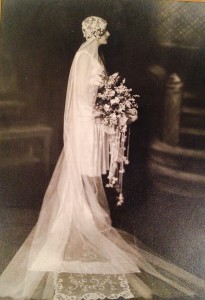
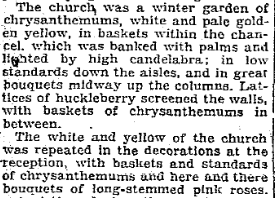
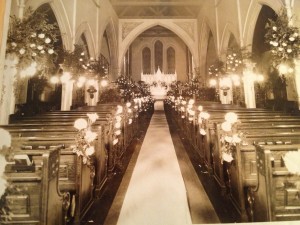
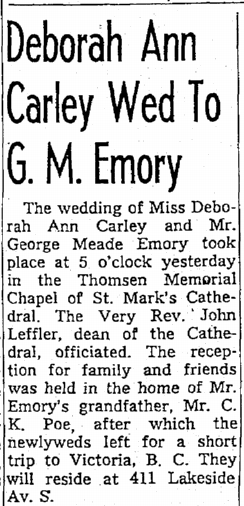



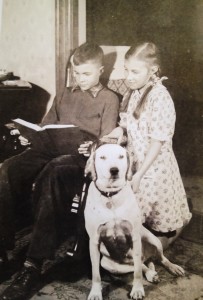


Recent Comments